The Most Charming Villages in Europe You’ll Fall in Love With Instantly
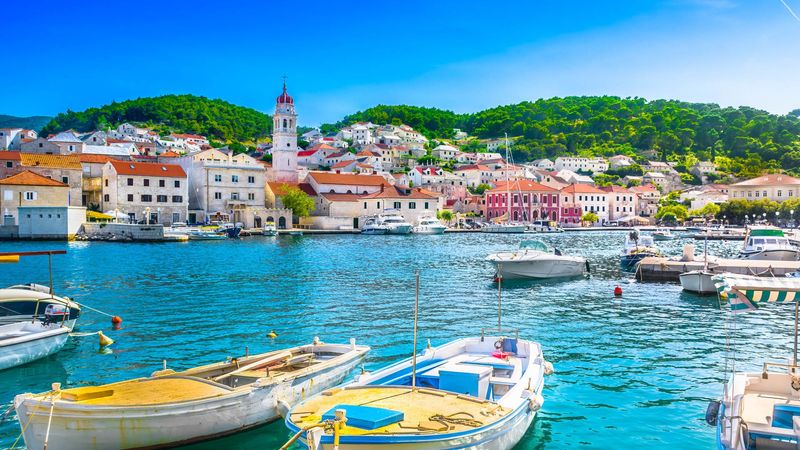
Europe is home to some of the most stunning villages in the world, places so charming they seem to belong in fairy tales rather than reality. From colorful harbors to medieval stone streets, these hidden gems offer a glimpse into a simpler, more magical way of life. Pack your bags as we explore 13 European villages whose beauty might just leave you wondering if you’ve stepped into a storybook.
1. Colmar, France: A Rainbow of Half-Timbered Houses

Nestled in the Alsace region, Colmar looks like it was plucked straight from Beauty and the Beast. Colorful half-timbered houses line canals in an area affectionately called “Little Venice,” creating reflections that double the visual delight.
Flower boxes overflow with geraniums during summer, while Christmas markets transform the village into a winter wonderland. Cobblestone streets wind between buildings dating back to the 13th century, each one painted in a different pastel shade. The village somehow survived both World Wars largely undamaged, preserving its authentic medieval charm for today’s visitors.
2. Bled, Slovenia: An Island Church in a Mountain Lake

Rising from the middle of a glacial lake sits a tiny island crowned with a 17th-century church, all watched over by a medieval castle perched on a cliff. Morning mist often shrouds the scene, creating an ethereal atmosphere that photographers chase year-round.
Traditional wooden boats called pletnas, rowed by standing oarsmen, ferry visitors to the island where 99 stone steps lead to the church. The surrounding Julian Alps create a dramatic backdrop that changes with each season. Legend says if you ring the church bell three times and make a wish, it will come true.
3. Hallstatt, Austria: The Village That Inspired Frozen

Wedged between a crystalline lake and towering mountains, Hallstatt clings to the smallest sliver of land. Pastel-colored houses stack up the mountainside like a carefully arranged diorama, their reflections dancing in the still waters below.
Salt mining brought wealth to this Alpine village 7,000 years ago, leaving behind a legacy of elegant architecture and cultural treasures. In winter, snow blankets the village’s 16th-century buildings, creating a scene so magical that China built an exact replica. The village is car-free, allowing visitors to wander its narrow pathways in peaceful appreciation of its timeless beauty.
4. Pučiśća, Croatia: The Marble Village of Brač Island

Gleaming white stone buildings cascade down to a perfectly protected harbor where turquoise waters lap against the shore. This Croatian treasure on Brač Island owes its distinctive appearance to the famous white limestone quarried nearby—the same stone used in the White House and Diocletian’s Palace.
Renaissance and Baroque buildings with red-tiled roofs create a striking contrast against the azure Adriatic Sea. The village houses one of Europe’s few remaining stonemasonry schools, where ancient techniques are still taught by master craftsmen. Narrow streets wind between houses built to withstand fierce winds, creating intimate squares where locals gather.
5. Bibury, England: The Cotswolds’ Crown Jewel
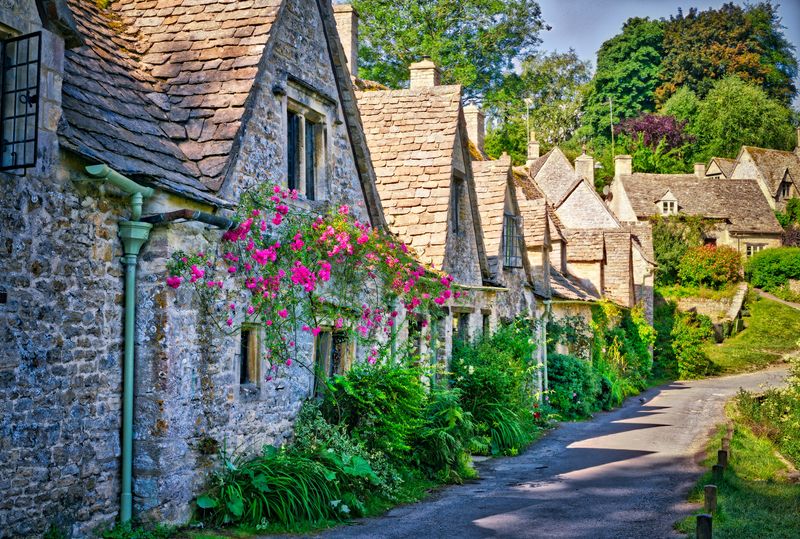
Honey-colored cottages built from local limestone stand in a perfect row along the River Coln, their steep roofs and leaded windows creating what artist William Morris called “the most beautiful village in England.” Arlington Row, a 14th-century collection of weavers’ cottages, appears on the inside cover of British passports.
Ancient stone bridges arch over the clear chalk stream where trout swim lazily past. Gardens burst with English roses and lavender during summer, while autumn brings golden hues that match the buildings themselves. Despite its popularity, Bibury maintains a peaceful atmosphere, especially in early mornings when mist rolls through the village.
6. Marsaxlokk, Malta: A Painter’s Palette of Fishing Boats
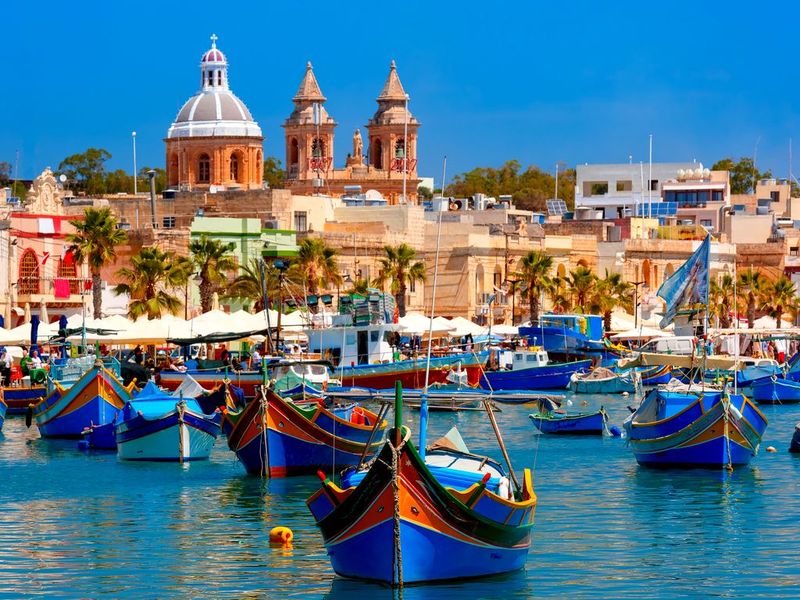
Bright luzzu fishing boats bob in the harbor, their vibrant blues, yellows, and reds creating a floating rainbow against the Mediterranean azure. Each boat bears the painted Eye of Osiris on its bow—an ancient Phoenician tradition believed to protect fishermen at sea.
Sunday mornings bring the famous fish market where the day’s catch is sold directly from the boats to locals and visitors alike. White limestone buildings with colorful doors and shutters line the promenade, their balconies draped with drying fishing nets. The village name combines the words for “harbor” and “southeast” in Maltese, perfectly describing this sheltered bay that has welcomed sailors for over 2,000 years.
7. Tellaro, Italy: The Cliff-Hugging Pearl of Liguria

Perched precariously on rocky cliffs above the Gulf of La Spezia, Tellaro’s pastel buildings seem to grow organically from the stone itself. This hidden alternative to the famous Cinque Terre offers similar beauty without the crowds, its narrow caruggi (alleyways) winding between centuries-old homes. Legend tells how the village was saved from pirate attack when a giant octopus climbed the church bell tower and rang the warning bell.
The tiny harbor shelters fishing boats that still supply the village’s seafood restaurants with daily catches. Pink bougainvillea and wisteria cascade down weathered walls, creating splashes of color against the backdrop of the endless blue sea.
8. Reine, Norway: Where Mountains Meet the Arctic Sea
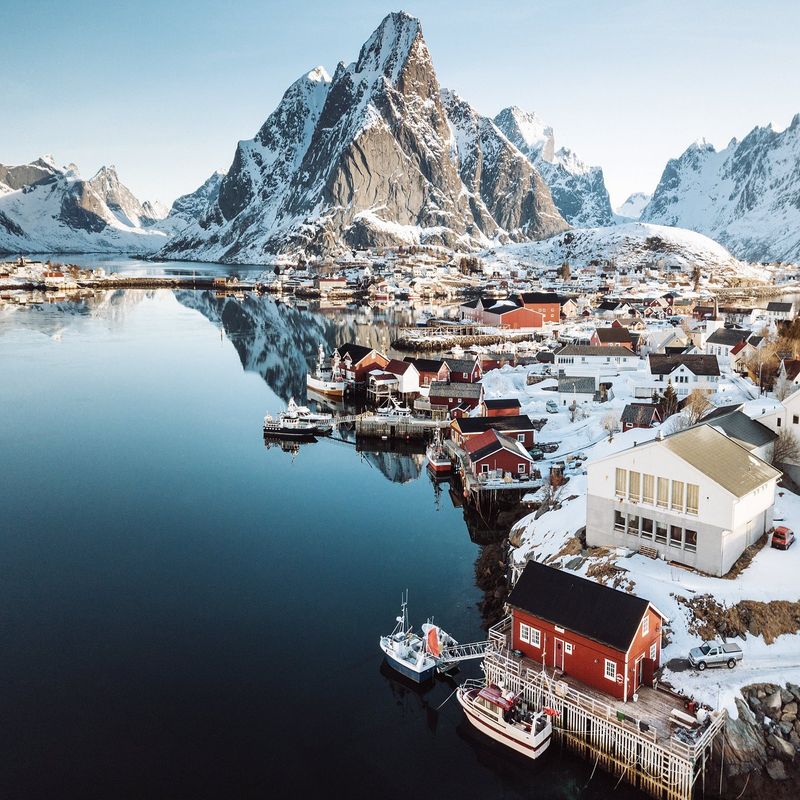
Red and white fishing cabins called rorbuer stand on stilts along the shoreline, reflected in the glass-like fjord waters beneath jagged mountain peaks. Located within the Arctic Circle on Norway’s Lofoten Islands, Reine experiences the midnight sun in summer and the ethereal northern lights in winter. Wooden racks for drying cod dot the landscape, a testament to the fishing tradition that has sustained this community for centuries.
The village’s position between mountains and sea creates one of the most photographed landscapes in Scandinavia. Despite harsh Arctic conditions, Reine maintains a year-round population who brave the elements in exchange for living amid such breathtaking natural beauty.
9. Freudenberg, Germany: A Symphony of Identical Timber Frames
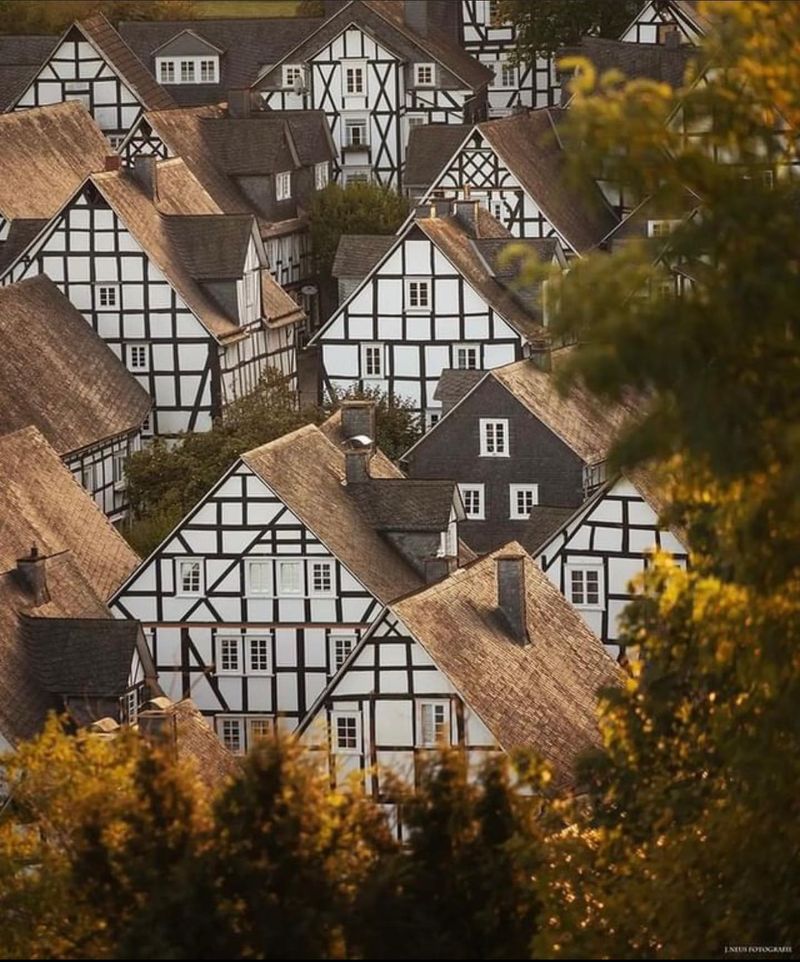
From a distance, Freudenberg appears as a perfect medieval painting—dozens of identical half-timbered houses with steep slate roofs creating a harmonious pattern against the hillside. The remarkable uniformity comes from rebuilding after a devastating 1666 fire, when the entire village was reconstructed in the same architectural style.
Each white and brown façade features the same geometric timber patterns, yet subtle differences in decorations and flowers make each home unique. The village center remains car-free, allowing visitors to appreciate the medieval atmosphere undisturbed. At sunset, the entire ensemble glows golden, creating a scene that appears more like an architect’s idealized model than a real working town.
10. Kinsale, Ireland: A Harbor Town of Rainbow Hues
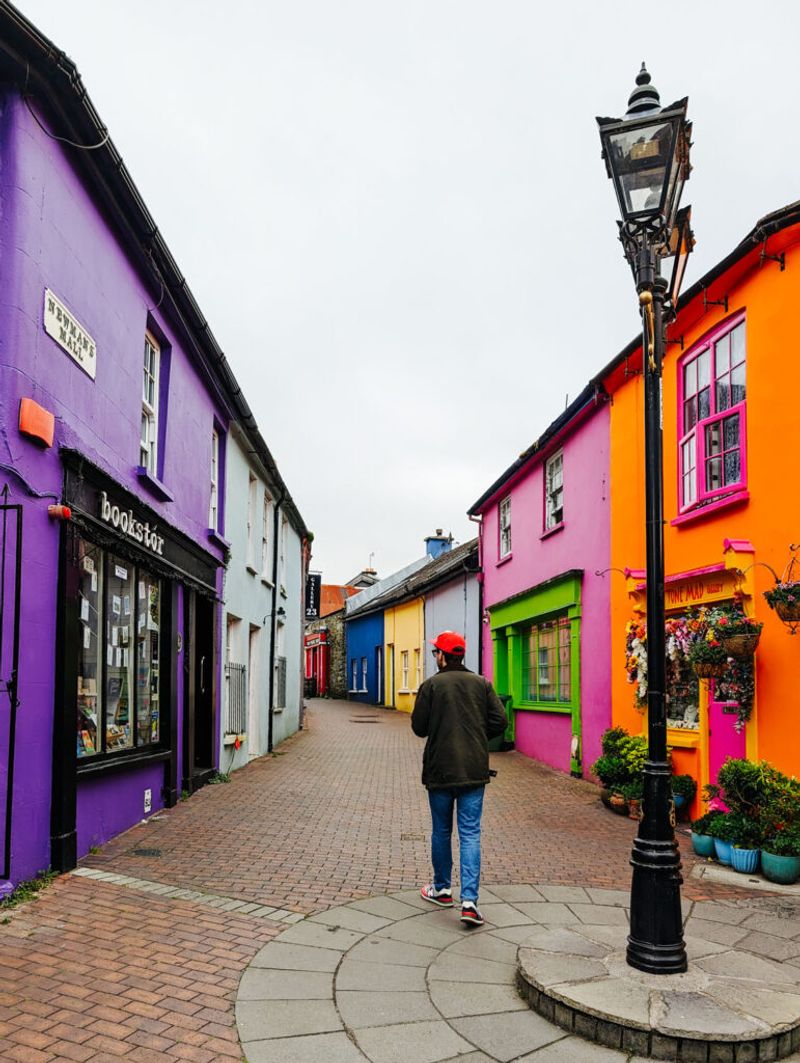
At Ireland’s southern edge, Kinsale bursts with color like a box of spilled crayons. No two buildings share the same shade—brilliant blues neighbor sunny yellows and rich purples, creating an atmosphere of playful creativity along winding lanes that date to medieval times.
As Ireland’s gourmet capital, the aroma of fresh seafood wafts from award-winning restaurants tucked between art galleries and craft shops. The harbor fills with sailing boats in summer, while two 17th-century forts guard the town’s approaches, reminders of Kinsale’s strategic importance throughout history. Traditional Irish music spills from pubs where locals share ancient tales with visitors over pints of stout.
11. Mürren, Switzerland: The Village Above the Clouds

Accessible only by cable car, this car-free Alpine village perches on a mountain ledge 5,413 feet above sea level, offering heart-stopping views of the Eiger, Mönch, and Jungfrau peaks. Traditional Swiss chalets with wide eaves and flower-adorned balconies line streets where the only sounds are cowbells and mountain winds.
In winter, residents strap on skis at their doorsteps to access some of Switzerland’s most legendary slopes. Summer transforms the surroundings into wildflower meadows where hikers pause to catch their breath—both from exertion and the spectacular panoramas. The village famously appeared in James Bond’s “On Her Majesty’s Secret Service” as Blofeld’s mountain hideaway.
12. Telč, Czech Republic: A Renaissance Time Capsule
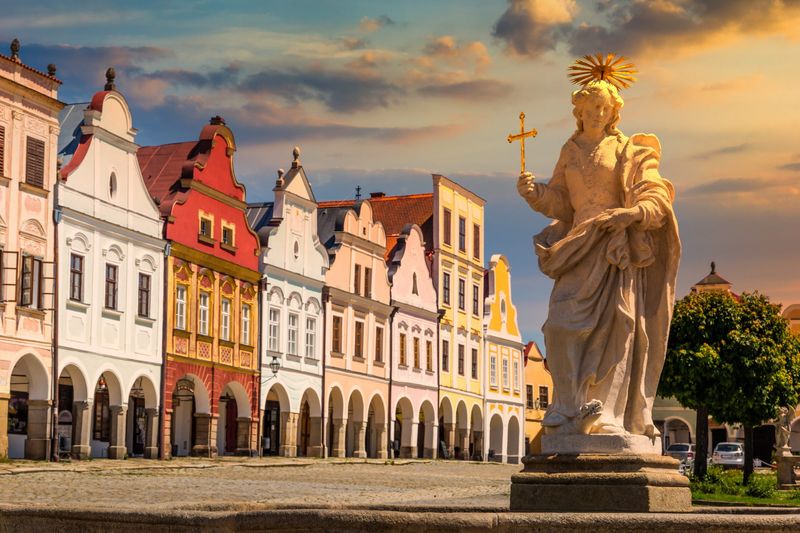
A perfect triangular square forms the heart of Telč, surrounded by candy-colored Renaissance houses with decorative gables and arcaded walkways. No two façades match, yet together they create perfect harmony—a masterpiece of urban planning that earned UNESCO protection.
A renaissance château with English gardens stands at one end of the square, while a network of underground tunnels connects cellars beneath the cobblestones. A system of ponds surrounds the historic center on three sides, originally built as defensive moats but now creating mirror reflections of the pastel architecture. The town’s isolated location helped preserve it through centuries of European conflicts, leaving it remarkably intact for today’s visitors.
13. San Gimignano, Italy: Medieval Manhattan of Tuscany
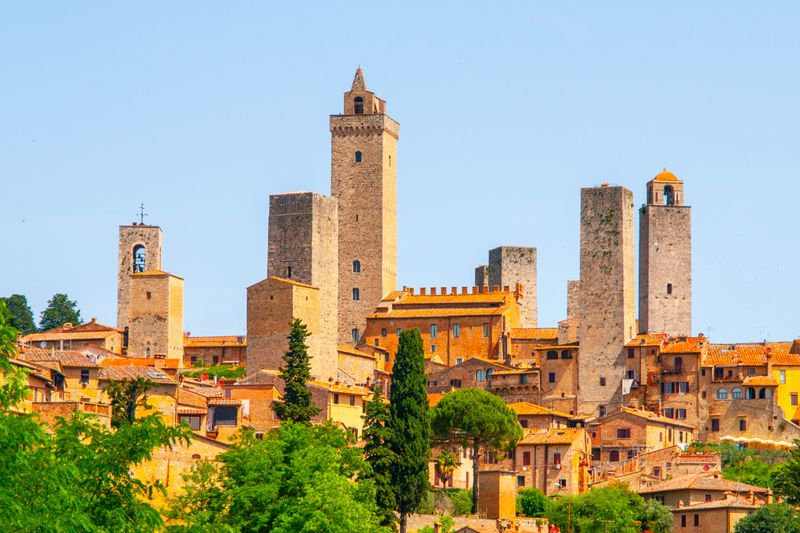
Fourteen stone towers pierce the Tuscan sky like medieval skyscrapers, earning this hilltop town its nickname. During its 13th-century heyday, wealthy families built 72 towers as symbols of their prosperity—the taller the tower, the greater the prestige.
Golden stone walls encircle the village, protecting narrow streets that open suddenly onto piazzas where locals gather around ancient wells. The town produces some of Italy’s finest white wine, Vernaccia di San Gimignano, enjoyed at sunset when the entire village glows amber in the fading light. Walking through the gates feels like stepping directly into a medieval painting by Giotto, whose frescoes adorn the town’s Collegiate Church.

Comments
Loading…